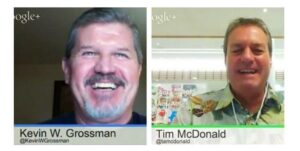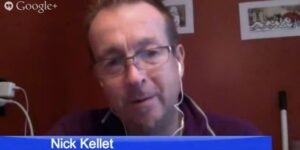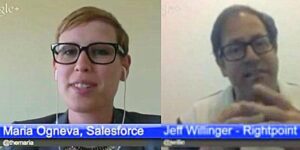
Finding Tech Talent to Fuel the Future #TChat Preview
As technology grows more integral to daily life, demand for tech-savvy talent is relentless. How can employers hire the best?

As technology grows more integral to daily life, demand for tech-savvy talent is relentless. How can employers hire the best?

2013 was all about growth at TalentCulture — so many ideas from so many voices! Which posts and people were most popular? Here’s a taste

It’s a very merry #TChatHoliday! See Tim McDonald and Kevin Grossman compare end-of-year notes in a brief hangout — and then share your own thoughts!

In an age of HR specialization, how can one-person departments succeed? Suggestions from the #TChat crowd…

How can social learning create a competitive advantage for today’s organizations? Ideas you can use — from this week’s 3rd Anniversary #TChat events

Looking back at the best of #TChat — with gratitude for everyone who brings the TalentCulture community to life

Can you believe #TChat has been going strong for three years? Time flies on the stream! Let’s talk about the future of social learning and your thoughts on community

TalentCulture is thrilled to be featured on Forbes List of “Best Websites For Your Career.” Why? In the spirit of lists everywhere, here are 3 reasons…

Do accepted brainstorming practices work as well as we think? How can teams do a better job of sparking creative ideas in today’s workplace?

Why is social learning suddenly such a hot business issue? Consider three fundamental facts…

It may seem like a fine line between #TChat events and controlled chaos, but there’s more here than meets the eye. Our community considers the why and how of crowdsourcing

In today’s connected world of work, how can we make the most of tools and techniques that help us curate and share collective wisdom?

With all the expert advice, tools and “thought leaders” available to us these days, who and what is making the biggest difference in your life? Let’s learn from one another!

Conferences: Who’s redefining the concept, and what does it mean for professional communities and personal brands? The case for crowdsourcing

Digital communities are increasingly important to business organizations. But what really makes an enterprise community effective?
Social learning is everywhere around us – in short, bursty ideas that simultaneously draw us in and distract us from whatever we were intending to accomplish. It also brings us together across the digital divide. It’s time to embrace quality peer-to-peer exchange and shared insights…
Written by Omowale Casselle Crowdsourcing is the act of outsourcing tasks traditionally performed by an employee or contractor, to an undefined, large group of people
Crowdsourcing is using an open call for tasks, information or data collection mostly through new media technology. Many times, a passionate crowd is much more powerful than an individual, business or closed community.